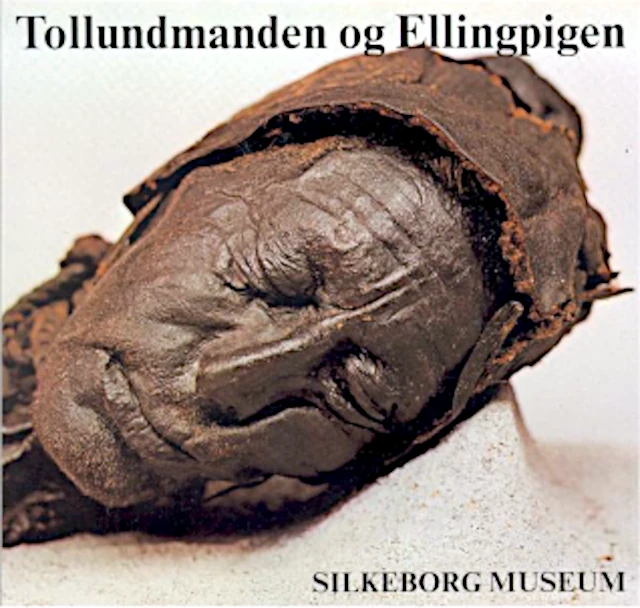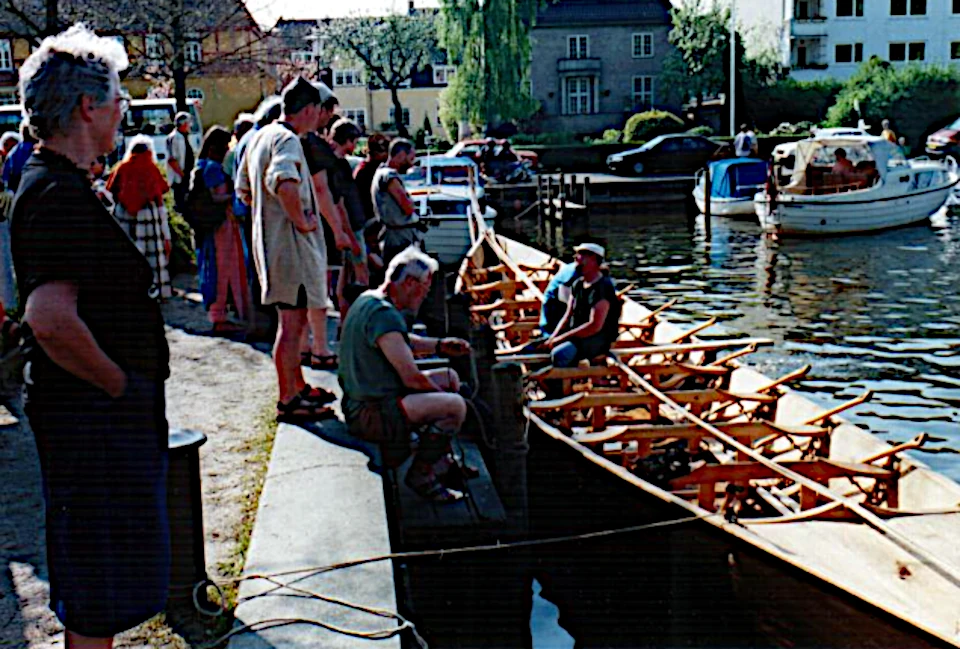Silkeborg
The Hjortspring boat and crew participated in this event.
Early Saturday morning, the crew members left for Silkeborg (although a few had travelled with Tilia on Friday). We arrived early in the morning to be ready to launch Tilia. We dressed in our Iron Age costumes and travelled 2000 years back in time. Besides ourselves, there were a lot of other ‘Iron Age people’. There were various stalls selling blacksmithing, shield making, wood turning, horns and beads, among other things. Prindsens Hverving, a group from Lejre that brings the Roman Iron Age to life in the form of tableaux and demonstrations, came with around 50 people. All in all, there were probably around 100 ‘Iron Age people’.
The Iron Age event opened at 10am, but we had to wait a bit before launching Tilia until the director of Silkeborg Museum, Christian Fischer, returned from a small event in the bog where Tollundmanden was found and excavated 50 years ago. With the help of people from Prindsens Hverving and Silkeborg Museum, we drove Tilia down to Gudenåen (about 150 metres from the museum) and launched her. She was sailed to a quay where we had been assigned a place next to the Hjejlen. During the course of Saturday, we were out sailing several times. As a thank you for helping us launch Tilia, several of the people from Prindsens Hverving and Silkeborg Museum were out sailing with us. "It's a pleasure to have people on board who are really interested in the Iron Age". Many are absolutely ecstatic when they come ashore.
During the Saturday, 5 lambs had been roasted over a fire. These lambs were served in the evening with salad and bread and the excellent wine brand ‘Ad libitum’. It was a cosy evening in the company of people with the same interests as ourselves.
Tilia stayed in the water at night to save her from being put on and off the trolley an extra time. We were divided into shifts to monitor Tilia during the evening and night.
On Sunday we went sailing again a couple of times. Valbjørn gave a short talk about the boat and our work. In the middle of the afternoon Tilia was carried ashore again and placed on the trailer. In the late afternoon, she was lifted back onto the block lorry to be taken home to the Linde shipyard.
During the weekend, many people visited the Iron Age event and saw Tilia either at the quay or sailing on the river Gudenåen. There were a lot of questions from the visitors, which we answered to the best of our ability. We sold 11 of our books and over 30 postcards featuring Tilia.
Several times during the weekend, Prindsens Hverving performed. They performed a small play from the Iron Age about the battle for the sword ‘Bluetongue’. After the play, they demonstrated the use of various Iron Age weapons - stone slings, bows and arrows, shields, throwing spears, etc. They also demonstrated the use of horses in battle. They brought along a number of Icelandic horses, which have been preserved purebred for over 1000 years in Iceland, so it's the closest horse to the horses of the time. They demonstrated the horses' five gaits: walk, trot, canter, walk and then tölt, which is a gait that only the Icelandic horse masters. In this gait, the rider's upper body is completely still, which was demonstrated by the riders riding around with a full beer mug without spilling. By accident, one of the horses demonstrated its strength by felling a young linden tree with its fetlock.
It was a great experience to participate in this event and it will be remembered for a long time to come.
By Leif Stig Andersen
If you have any comments on this article, you can send an e-mail to the
Please do not overwrite the existing text in the subject field, I need
information to see which article you are writing from. Feel free to add
your topic afterwards.







